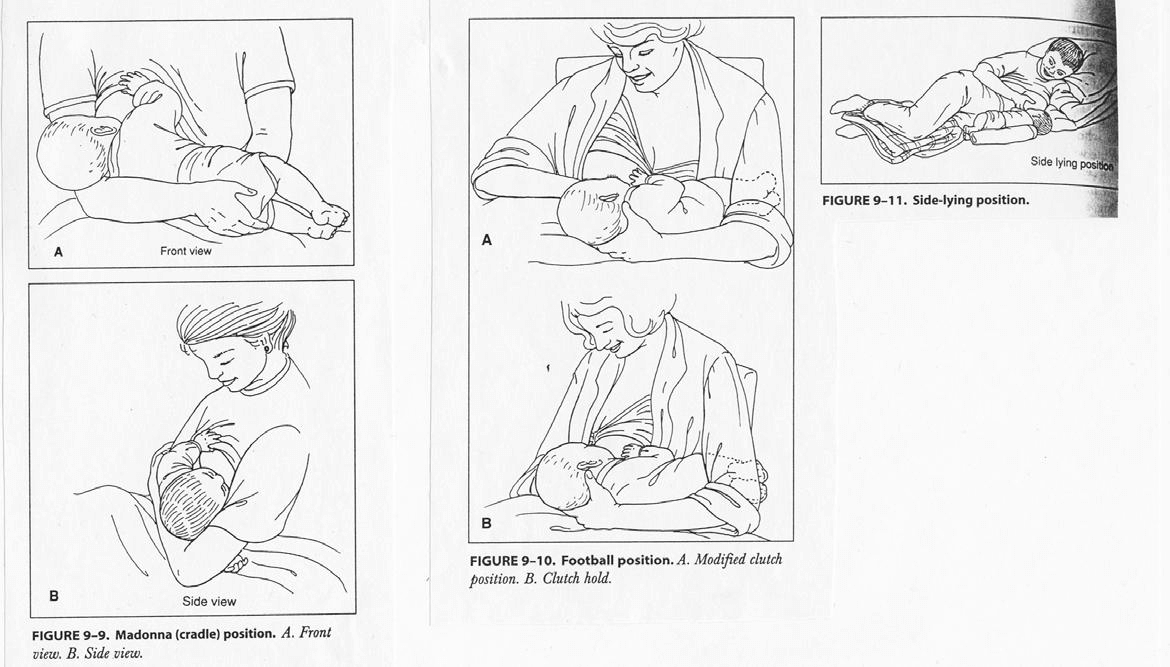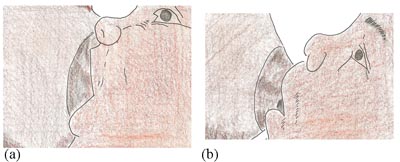It is always advisable to provide counselling about newborn feeding during the antenatal period and continue reinforcing it during the postnatal period. This teaching should focus on establishing and maintaining optimum breastfeeding.
Optimum Breastfeeding Criteria
- Initiation of breastfeeding within one hour after birth (early breastfeeding).
- Nothing is given to the baby other than breast milk for the first six months (exclusive breastfeeding).
- Colostrum is not thrown away, it is rich in protein and antibodies and is useful to the newborn; you should tell the mother to feed it to her newborn because it is the first "immunisation" that her baby will get.
- The mother is sitting in a good position while breastfeeding.
- The baby has a good attachment to the breast while breastfeeding.
- There is effective suckling.
Four Signs of Good Positioning
To begin with, the mother should sit comfortably maintaining the four signs of good positioning:
- With the newborn's head and body straight.
- Facing her breast, with baby's nose opposite her nipple.
- With the newborn's body close to her body.
- Supporting the baby's whole body, not just the neck and shoulders.

Figure 8.1. The recommended positions of breastfeeding.
If the mother has had a caesarian delivery, or her abdomen is sore for some other reason, she may be more comfortable supporting the baby as shown in Figure 8.1b. It keeps the baby's weight off her abdomen. She can feed twins this way too, with one on each breast. At night, or if she is tired and needs to rest, she can feed the baby while lying down (Figure8.1c), but only if she stays awake.Once good positioning is established, show the mother how to help the newborn to attach to the nipple. She should do the following:
- Touch her newborn's lips with her nipple.
- Wait until her newborns mouth is opening wide.
- Move her newborn quickly onto her breast, aiming the newborn's lower lip well below the nipple. Then check for signs of good attachment.

Advise the mother to empty one breast before switching to the other so that the newborn gets the nutrient-rich hind milk (last milk), which is produced when the breast is almost empty.
The four signs of good attachment (see the figure above) are the following:
- Mouth widely opened.
- Lower lip turned upward.
- Chin touching the breast.
- More of the areola (the dark ring around the nipple) is seen above the baby's mouth than below it.
Effective Suckling
Good signs of effective suckling are if the newborn takes slow, regular and deep sucks, sometimes pausing. The mother should tell you that she is comfortable and pain-free.
If you observe that the attachment and suckling are inadequate, ask the mother to try again and reassess how well the baby is feeding. If they still cannot establish optimum breastfeeding, then you should assume that the newborn has a feeding problem and/or the mother has breast problems that make attachment difficult. If so refer the baby and the mother to a health facility for further advice and care.


